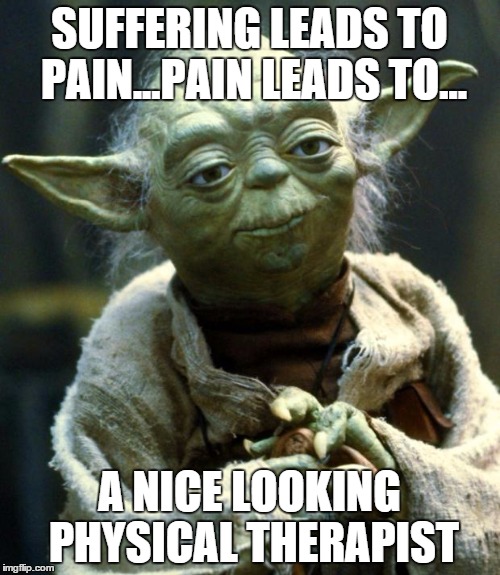October is National Physical Therapy Month and in recognition I thought I’d address one of the biggest barriers that I’ve encountered as a physical therapist. The problem is that patients, the public, and sometimes friends don’t know exactly what I or other physical therapists do. Most of what people know about physical therapy comes from movies or sports events where physical therapists help patients relearn to walk or assist injured athletes on the field. We as therapists, are jacks of many trades, and often find it difficulty to define what we do to the general public but I will try my best to define this for you today.
In the most basic sense, physical therapists are trained and educated in human movement. They excel in helping those who cannot move properly whether it’s the result of injury, disease, or disability. The goal of working with a physical therapist is to return to normal function and restore quality of life.
Here’s how one of our patients explains it: “Dr. Friedman helped restore mobility in my neck and totally eliminate pain caused by a muscle spasm in my back. She tailored my treatment specifically for my injury and restored me to full function in no time. ”
Physical therapists evaluate patients of all ages and backgrounds to devise a plan to reduce pain and improve or restore mobility. The evaluations consist of range of motion, strength, flexibility, posture, gait, balance, and functional measurements. They take their exam findings and devise a customized program that includes exercises, functional activities, and modalities to assist in recovery. The rehab experts also help people wishing to avoid the loss of mobility or prevent future episodes of pain through fitness and wellness approaches.
Physical therapy is an obvious choice when you’ve sprained an ankle or developed tennis elbow,but what about when you need to boost your mood? Though highly skilled in methods that improve mobility and reduce pain following an injury, physical therapists can also play a key role in improving a patient’s mental health by using exercise, a core component of any physical therapy regimen. Exercise is known to benefit patients with mild to moderate mood disorders such as depression. While physical therapists cannot diagnose or treat depression directly, exercise as a part of a physical therapy program can help improve mood. PTs are trained to recognize the signs and symptoms of depression and identify the ways in which mental health disorders
interfere with a person’s ability to enjoy life. They also know when it’s appropriate to refer a patient to a mental health care professional.
Each new year brings a chance to make positive changes that impact yourself and those around you. In 2017, private practice physical therapists are committing themselves to raising awareness of the services offered, talking about how patients benefit, and reminding the public of contributions to our nation’s health and wellness goals.
Our professional organization is called the The American Physical Therapy Association or APTA. The APTA represents more than 85,000 physical therapists, physical therapist assistants and students of physical therapy nationwide. For more information about physical therapy and its sub specialties please visit www.apta.org.


